Android Phone Fans |
- Department of Defense to start accepting Android phones for top-secret classified information
- LG Optimus LTE 3 leaks
- Nexus One revived for NASA’s PhoneSat program, will take pictures in space [VIDEO]
- Chrome for Android update brings improved scrolling performance
- Sony experiments with Firefox OS, allows developers to join in with Xperia E [VIDEO]
- Ubuntu Touch builds will soon be available for more than 20 Android devices
- Hands-on: €120 Acer Iconia B1 [VIDEO]
- Hands-on: NEC Medias W – the latest foldable, dual-screened Android
- US Cellular launches 4G-enabled Galaxy Note 10.1
- NVIDIA booth tour takes you deep into Tegra-land [VIDEO]
- Hands-on: Alcatel One Touch Star and One Touch Idol
- Android’s F-Word mostly irrelevant, but affects Apple similarly
- Hands-on: Alcatel One Touch Idol Ultra [VIDEO]
- Skype update lets tablet users revert to phone interface
- Samsung Wallet announced, brings important passes, cards and coupons to one convenient location [VIDEO]
| Department of Defense to start accepting Android phones for top-secret classified information Posted: 27 Feb 2013 03:05 PM PST That’s one small step for Android, and one giant leap for Android-kind. It looks like the US Department of Defense is about to end its reliance on Blackberry as a secure platform as the government is making amends to its smartphone policy. The new policy will allow government officials to use top Android phones from the likes of Samsung to access information and communication channels up to classification levels of top-secret. The Department of Defense says it’s crucial for its soldiers and officials to have access to modern devices in order to facilitate better collaboration in the cloud and things of that nature. In other words, it’s time to ditch the archaic, dated phones of yesteryear and get with the times. The significance of this development is huge, as most folks believe the biggest thing keeping Android from completely burying Blackberry is a lack of sufficient security. The new policy isn’t totally BYOD — or “bring your own device” — unfortunately, but you might be able to understand why. The devices DoD is ordering, about 600,000 of them, have been scrutinized very carefully to ensure they’re secure enough for this task. Bringing your $100 PAYG phone won’t be ideal because there’s no way for the DoD to ensure all the different unique devices swirling about meet the same standard of security. Android has already broken several barriers in the enterprise sector as OEMs have built devices to be secure and flexible enough for businesses to do their bidding on almost any wireless device you can imagine. Samsung has been one of the biggest players in paving the way for Android’s dominance in enterprise with its SAFE-certified program. HTC, LG, Sony, Motorola and more are all doing fantastic jobs of their own. Enterprise and government are the last two markets where Blackberry, formerly RIM, still has a strong grip, and if it continues to lose the hearts of those folks it’s tough to see it climbing back into the smartphone race anytime soon. The tides are turning all over, folks, and it’ll be a fun ride to see what it leaves behind as the water spills back into the proverbial sea. [via The Register] |
| Posted: 27 Feb 2013 02:08 PM PST It looks like LG will soon come to town with a new LG Optimus LTE as the third edition in this line has leaked. It was spotted in LG’s home base of Korea, and it will apparently come with a dual-core Snapdragon S4 processor, a 720p display,a 2,420mAh battery, and will come with Android 4.1.2 out of the box. It gets iis name from the LTE radios sitting inside, obviously, so you can expect 4G speeds, as well. This device won’t challenge LG’s new Optimus G line, but it could be a nice option for folks who need a 4G smartphone at inexpensive costs. The Optimus LTE 3 is said to be headed to store shelves later this year, but don’t be surprised if its launch is limited. SK Telekom will be offering it, at least, so we know LG’s got its home front covered. [via Unwired View] |
| Nexus One revived for NASA’s PhoneSat program, will take pictures in space [VIDEO] Posted: 27 Feb 2013 12:57 PM PST So you thought the Nexus One was dead? The original Nexus phone will never die! Or, so says NASA, anyway. If you don’t remember, NASA chose the Nexus One to be the world’s first smartphone in space to be used as a nano satellite. It has actually been a few years in the making, as extensive tests had to be made to make sure the Nexus One could withstand the harsh conditions of space. The Nexus One was put into vacuum chambers and tested in a wide temperature range to make sure it could make it into orbit without melting. Welp, it passed, and now it’s floating in space. So what, exactly, will this iconic phone be up there to do? For now, we only know that its main purpose is to take photos from space and collect satellite data, and beam that information back to the curious souls here on Earth. The satellite will utilize the 360 App to do its bidding, and before too long we’ll be able to look at the various photos it takes on the 360 App Facebook page. It won’t stop there, though — users will be able to request their own snapshots of space, but details have yet to come out regarding that exciting opportunity just yet. We always joke about how Android is on everything from toasters to refrigerators, and from cars to watches, but after getting the first Android-powered satellite into the atmosphere it’s safe to say that Android can and will be used on absolutely anything. Take a look at the video above to see what went into this historic launch by Surrey Satellite Technology. [via HTC] |
| Chrome for Android update brings improved scrolling performance Posted: 27 Feb 2013 12:19 PM PST The Chrome for Android team has been quite busy lately. A new build for Android devices has come to the stable channel, it brings a lot of improvements and changes. The most notable change will be the improved scrolling performance in webpages. It’s a gripe many of us have had ever since the browser launched, and it’s one that Google hasn’t been as quick to address as other areas. The hatchet is buried for the time being now, though, so head to your favorite site and start flinging around to see just how much smoother it is. Another big change is the increase in responsiveness to pinch-to-zoom on web pages. Again, it’s something we’ve all let out a slight moan about even if the implementation wasn’t bad enough to drive us away from the app. Other changes include faster interactive pages due to an update V8 javascript engine, continuous audio playback while Chrome is in the background (it will pause when a phone call is in progress, though), support for more HTML5 features, and more. A few users are already raving about some of the changes in the Google Play Store so get over there and give it a whirl for yourself. For you new folks, it’s a free download, so if your stock browser, Firefox, Opera, or whatever other browser you currently prefer has been giving you trouble lately then you owe it to yourself to at least give it a shot. |
| Sony experiments with Firefox OS, allows developers to join in with Xperia E [VIDEO] Posted: 27 Feb 2013 10:59 AM PST We often hear of OEMs “exploring” their options and “testing” other operating systems for consideration in future products, but it’s not so often those companies invite common developers along for the ride. Sony’s different, though, and it has braced the development community quite nicely as of late. The latest opportunity from Sony is here, and it allows developers who happen to have a Sony Xperia E to experiment with Firefox OS. Sony’s desire to test Firefox OS comes in conjunction with Latin American carrier Telefonica. Firefox OS has been presented as a viable option for OEMs looking to provide phones for emerging markets. It’s an open, web-based operating system that harnesses the power of HTML 5 to provide a familiar development environment for developers. With Firefox OS being so early along in development and without any third-party apps things don’t look too exciting just yet. Still, if you want to get a head start on developing your own apps for the platform this is a perfect way to do just that. This link has all you need — everything, from instructions for unlocking the Xperia E’s bootloader to flashing Firefox OS and building apps, is covered there. Be sure to give it a long look before proceeding. |
| Ubuntu Touch builds will soon be available for more than 20 Android devices Posted: 27 Feb 2013 10:16 AM PST When Canonical originally announced Ubuntu Touch, we were surprised to learn that the new Linux-based mobile operating system could be built to run on current Nexus devices. Those with the Galaxy Nexus, Nexus 4, Nexus 7 and the Nexus 10 would be able to get this thing up and running as long as they had an unlocked bootloader. As exciting as that was, that list of devices didn’t account for much of the Android ecosystem. Well, a few more of you will be able to build the source for your devices soon as Canonical has confirmed more than 20 new devices would be added to the list. These devices include the Motorola XOOM, CDMA Galaxy Nexus devices, the Nexus S and Nexus One, the HTC One X and One X+, the Samsung Galaxy Note, Note 2, and S3 (Verizon, AT&T, and international GSM variants), the Galaxy S2, Galaxy Tab 10.1 WiFi, Motorola’s DROID 3, DROID 4 and DROID Bionic, the ASUS Transformer Pad and Transformer Infinity, LG Optimus 4X HD, and more. Typical users probably won’t benefit from this news unless a developer decides to turn them into flashable ROMs, but its main goal is to give developers a chance to develop and test apps for the platform ahead of its launch. You can find the full list of devices at the wiki here, which is sorted to show you which devices Ubuntu is running fine on, which devices are considered a work-in-progress and which devices are deemed “sort-of working,” as well as links to everything you need for your particular device (if available). We’ll be tracking Canonical down at Mobile World Congress to get a close look at Ubuntu Touch for ourselves, so stay tuned for continued coverage! [via Pocket-Lint] |
| Hands-on: €120 Acer Iconia B1 [VIDEO] Posted: 27 Feb 2013 09:59 AM PST While drowning in tech here at Mobile World Congress 2013, we got our grubby little hands on the recently announced Acer Iconia B1. In case you were wondering, the B stands for you have to Be one cheapass Android buyer to pick up something this cheap. Priced at a rock bottom low $120 for 8GB of storage ($140 for 16GB), the Acer Iconia B1 answers the question of how low an Android device can go while still remaining usable for the most part. In our brief time with the tablet, the software felt relatively snappy for the most part, lacking only in the “butter” department when scrolling around the UI. Check out our quick hands-on video to get a better look at the outside of the device The B1 doesn’t pack the kinda spec sheet you’d want to write home about, with barely 512MB of RAM and a dual-core 1.2GHz processor, 7-inch 1,024 x 600 display, and a .3MP front facing camera. Still no word on US availability but unless you’re really trying to save your pennies, we can’t imagine why anyone would opt for this over the already affordable ASUS Nexus 7.  |
| Hands-on: NEC Medias W – the latest foldable, dual-screened Android Posted: 27 Feb 2013 09:15 AM PST At the tail-end of January, Japanese carrier NTT Docomo announced their new lineup of Android devices (11 in all), one of which included the dual-screened foldable NEC Medias W. We’ve seen handset designs like this before with the failed launch of the Kyocera Echo and Sony Tablet P. That being said, we weren’t expecting too much from yet another dual-screen Android device, but after our hands-on with the NEC Medias W, we were singing a different tune. The Medias W utilizes two 4.3-inch qHD displays on the front and back of the device that open to create a wider, near tablet-like experience. Honestly, it’s perfect for users who’ve been eying larger Androids like the Galaxy Note, but don’t want to sacrifice the benefits of having a smaller phone. In execution the Medias W offers the benefit of extra screen real estate that trumps even the Galaxy Note, giving a better Android tablet experience than that of a big phone. NEC’s tweaked their software — which is a mostly stock Android experience by the way – to display either extra content on both screens, or separate content (email conversations on one list, and an open email on the other) depending on preference. It’s all quite genius and executed better than we thought. Take a look at our hands-on video below for a demonstration and see for yourself if 2 screens are better than one. While the Medias W is currently available in Japan, NEC announced the global variant of the device at MWC 2013 meaning it should work rather well with AT&T bands, sans LTE of course. With a dual-core Snapdragon S4 processor (MSM 8960), 1GB of RAM and a 2,100mAh battery, the Medias W may not have the horsepower to appease most Android spec-nuts, but this one trick pony may win over those looking for something different from the traditional Android experience (myself included). 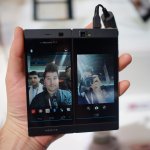 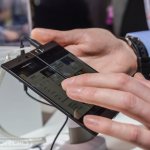   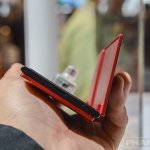 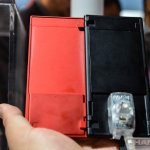 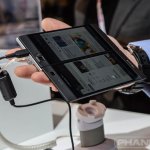 |
| US Cellular launches 4G-enabled Galaxy Note 10.1 Posted: 27 Feb 2013 09:04 AM PST The Samsung Galaxy Note 10.1 is no spring chicken by now, but some who have been waiting for 4G-equipped versions of the Wacom-enabled tablet to hit their favorite carriers might still be looking out for it. US Cellular is the latest to add the 10.1-inch tablet to its ranks as it has just announced availability. Starting from today, you can grab the 16GB tablet for $500 when paired with a data plan that offers at least 2GB of bandwidth. Available both in-store and online, the Galaxy Note 10.1 brings you Samsung’s S Pen experience to the bigger screen, with unique features such as multi-view, AirView, S Note, the Learning Hub and more. For specs, you can look forward to a 1.4GHz quad-core Exynos processor, 2GB of RAM, 16GB of internal storage, a 5 megapixel camera on the rear, a 1.9 megapixel camera on the front, and more. It’ll come with Android 4.1 out of the box. Grab your wallet and head to US Cellular if this is something you’ve been waiting for. Read on for full press details.
|
| NVIDIA booth tour takes you deep into Tegra-land [VIDEO] Posted: 27 Feb 2013 08:45 AM PST You’re not at Mobile World Congress, but that’s OK — tons of video content ensures you’re seeing all the exciting bits exactly as we do. In case you were curious to see what’s shaking over at NVIDIA’s booth you can check out this official booth tour from Will Park. He showcases everything from Tegra 4 reference devices to NVIDIA Shield, NVIDIA Grid cloud gaming to Tegra 3-enabled in-dash products and more. Don’t forget that we had our own bit of fun over at the company’s booth yesterday where we got our hands on some great new Tegra 4 HD games. Be sure to check that hands-on bit out here, and catch NVIDIA’s booth tour above. |
| Hands-on: Alcatel One Touch Star and One Touch Idol Posted: 27 Feb 2013 08:44 AM PST New for Mobile World Congress, the Alcatel One Touch Star is an entry level device that packs a bit of style to boot. Think of it as something along the lines of LG’s L Series. It features a 4-inch display, dual-core 1GHz processor, and 5MP camera. The One Touch Star runs Jelly Bean (4.1) with Alcatel’s custom experience, which isn’t too far a stretch from Google’s stock build. Like Alcatel’s most recent devices, it carries and air of quality we normally wouldn’t associate with handset’s from the company, a nice trend that we would like to see continue. The One Touch Star blends budget with build in a mostly successful way. Not so new for MWC, but still worth checking out, is the Alcatel One Touch Ultra. This phone site below the Ultra Idol in Alcatel’s lineup, sporting a dual-core 1GHz processor, 8MP camera, and 4.66-inch qHD display. The One Touch Idol felt generally cheaper than the other devices Alcatel had on display. It could make a good mid-range device for those looking to avoid splurging Alcatel seems to be on the up and up when it comes to device manufacturing, and with the right marketing and a strong push it wouldn’t be surprising to see the company’s future offerings making a few waves in the mobile industry. They don’t have much of a presence in the US, but many of their recent devices are planned to launch in the States at some point in the near future. As for the One Touch Star, that should be hitting other markets as early as March.  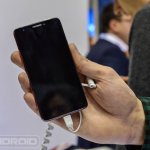 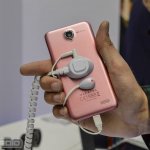  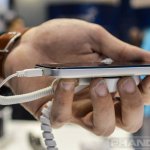 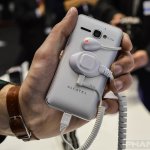 |
| Android’s F-Word mostly irrelevant, but affects Apple similarly Posted: 27 Feb 2013 08:09 AM PST Yesterday marked an impressive milestone for Android – Google Play Services version 3. For such an important milestone, though, you’ll find no Android statue on the lawn in front of building 42, no dessert themed easter egg in the settings menu, and little more than a general “meh” heard from Android users. So what, exactly, is the big deal?
Like the first release, this hit all Google Play supported devices. Yesterday, version 3 brought Google Plus features, and revamped the entire Google Account usage concept for authentication inside your apps, and no device was left behind as all Google Play supported devices are seeing this update. I should also make note that the very popular Honeycomb Fragments UI API was even backported to prior versions of Android. So what, then, is a Google Play supported device? Quite simply, it’s an Android device that has the Google Play store installed on it, running Android 2.2 (Froyo) or higher. Taking a look at the most recent Android OS Distribution Statistics, that means that Google Play Services is enabled for 97.6% of all Android devices captured in that report. While this obviously excludes non-Google Play devices (the Kindle comes to mind), it’s still a very impressive and important milestone. Why, then, does fragmentation no longer matter? Simple: Android is now designed for it. Google provides tools for developers to write applications, and the capabilities they provide are now mostly version-agnostic. Sure, Ice Cream Sandwich has the new Holo UI, and tablets have a higher display resolution than phones (but for how much longer?), but Android has built frameworks for this. You can specify multiple layouts for your application, if you choose – a tablet layout for larger screens, and a phone layout for smaller screens. A Holo UI for Android 4.0+, and a regular UI for non-Holo devices. The restriction of apps to specific versions of Android is only necessary in only two viable cases. In the first case, developers might be targeting a specific feature such as Google Now, or the new Lockscreen Widget found in Jelly Bean 4.2. Like applications targeting Siri on the iPhone 4s and 5s, the OS obviously has to support these features for developers to develop against them. In the second case, the developer doesn’t wish to provide an alternative layout for their application. As a developer myself, I’ll admit that sometimes it’s easier to cut my losses (and my customer base potential) by giving the axe to older devices. They’ll be running Android 4.0+ eventually, so it’s a time-saver to not implement two different UIs in my application. I might not have the debugging capability (the emulator only goes so far) to support legacy UIs as well as Holo UIs, or I might want to break up my app into a tablet and phone variety for other reasons. But those are all developer choices, not technical requirements.
Apple on the other hand, seems to have bigger problems. Between the retina display devices and the non-retina display devices, to get an application truly compatible across all of Apple’s devices, you need to include 4 different UIs, which includes different resolution textures, graphics, and layouts. While the retina display iPhones have the same resolution as the non-retina display iPads, they can’t utilize the same layouts. While this concept makes no sense to me, it’s obvious that Apple thinks different. For non-static content, such as OpenGL rendered objects, a developer needs to render at retina display density to support those devices (even if it isn’t necessary, in which case the resulting render gets scaled back, causing it to lose detail), or render at lower density, and have your renders look blocky on the retina display devices. Or double your code, one renderer for each device, and double your fun! Both implementations of mobile operating systems have their drawbacks with support for multiple devices, but both custodians of those operating systems have provided plenty of tools to tackle the problems at hand, and they’re beyond sufficient for most apps. While Google and Apple will both continue to release more devices and newer versions of their operating systems on them, we’re finally beyond the days where apps have to be dependent on those versions. It’s always harder to support two layouts inside an app than one, but it’s a necessary evil if you want your application to run on the latest and greatest innovations out of Silicon Valley, and it’s a trend that is only going to continue. So maybe that F-word isn’t so scary now after all. Does it still have you trembling in your boots? |
| Hands-on: Alcatel One Touch Idol Ultra [VIDEO] Posted: 27 Feb 2013 08:02 AM PST Alcatel One Touch has plenty of device’s to show off at Mobile World Congress, but if any sticks out above the rest it’s the Idol Ultra. While the specs don’t necessarily “wow” us at every turn, it’s the beautifully simple (and sleek) build that makes the handset so attractive. Perhaps that’s because the materials and design reminded us a bit of the HTC One X, arguably one of the best smartphone designs from the past few years. But even considering the similarities in build quality the One Touch Idol Ultra stands out on its own (that’s not to say it comes close to grazing what the One X is, though). The best design element is the phone’s slim build, measuring in at a mere 6.45mm. Alacatel calls it the world’s thinnest smartphone. Specs include a 1.2GHz dual-core processor, 4.7-inch 720p display, and 8MP camera. The phone runs Jelly Bean (Android 4.1) with a light UI skinning on top. The Alcatel One Touch Ultra Idol will land in the US later this year priced at around $450 without a carrier subsidy. 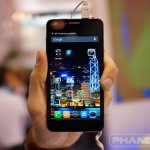   
|
| Skype update lets tablet users revert to phone interface Posted: 27 Feb 2013 06:57 AM PST The last major Skype for Android update brought support for Android tablets, but users were disappointed to find out the app got rid of the all-important portrait mode. This probably didn’t matter much to those with 10-inch tablets, devices that are rather unwieldy and impractical to use in that orientation, but those on 7-inch devices such as the Nexus 7 might feel a bit differently. Well, Skype has released an upgrade today to address all that for the time being. Today’s upgrade adds an option that will allow users to switch between tablet and phone user interfaces at a moment’s notice. The tablet user interface is still locked to portrait orientation, but the phone interface will let you use Skype in the more comfortable portrait configuration. It’s worthy to note that the phone interface has much of the same features as the tablet version, so you aren’t really missing out on any features. It’s not perfect, but it’s a necessary bridge as Skype continues to tweak the tablet user interface to make it easy for all users to enjoy. Grab it from the Google Play Store and see if you can’t win a bit of your comfort back. |
| Posted: 27 Feb 2013 06:38 AM PST Samsung has been on a small roll this week as it has announced yet another development for the future of its smartphones and tablets. The Korean manufacturer has announced a new feature for its future phones and tablets. Dubbed “Samsung Wallet,” it’s an app that will allow you to store things such as your retail discount and membership cards, boarding passes, coupons and more, and access them in one central location. Some will liken the app to Apple’s PassBook, and that doesn’t look good in the middle of a heated battle between the two companies where Samsung has often been accused of biting Apple’s style. Samsung’s app uses NFC, but early word is that it won’t primarily be for facilitating wireless payments — that’s what the payWave partnership with Visa is supposed to bring. The app will also utilize location-based features that will notify you when you’re near a store, business or venue where you can use one of your passes. The app is in beta right now, but Samsung is allowing developers to get an early start on things with the API ahead of the March 7th launch. Big names like Walgreens, Hotels.com, Expedia, Major League Baseball and more will be on-board to start, and we’re sure that list will grow quite nicely with time. Samsung didn’t specify whether the company would be offering the app in the Play Store but we’ll be reaching out to verify. Get a quick demo of the app in the video above. |
| You are subscribed to email updates from Android Phone Fans To stop receiving these emails, you may unsubscribe now. | Email delivery powered by Google |
| Google Inc., 20 West Kinzie, Chicago IL USA 60610 | |




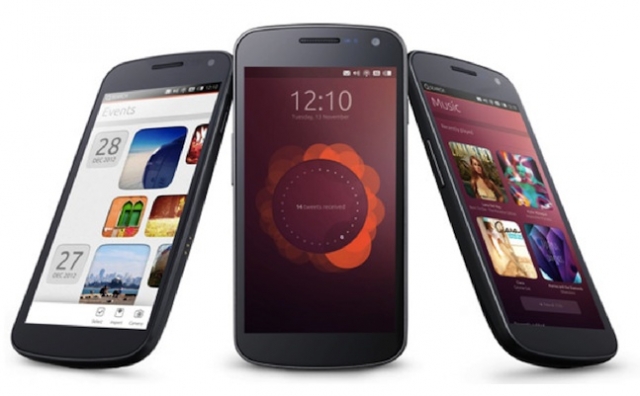
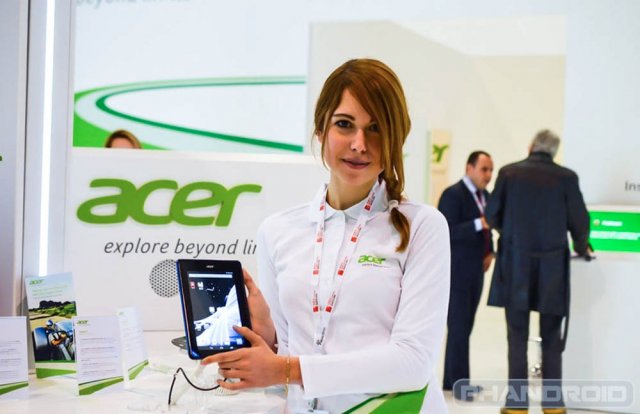
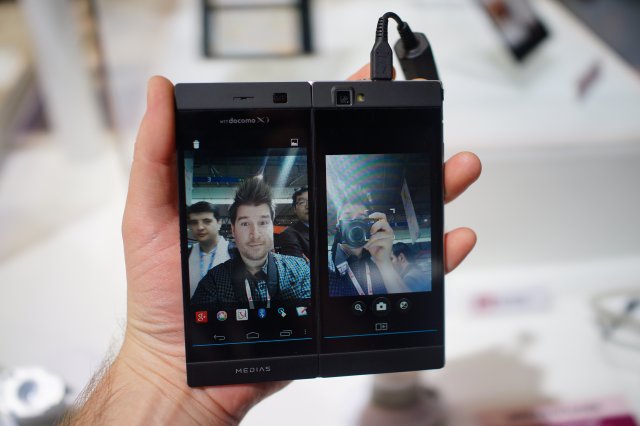
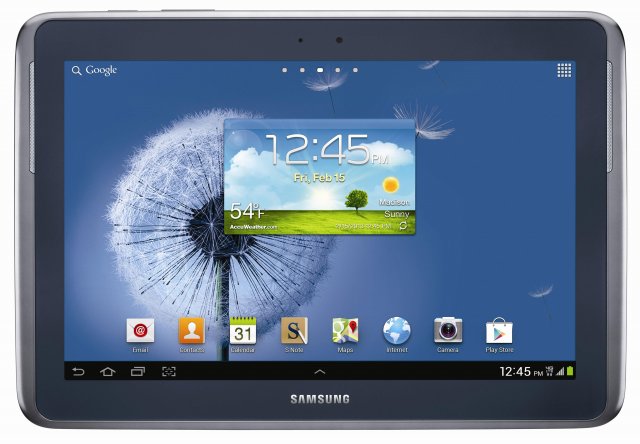

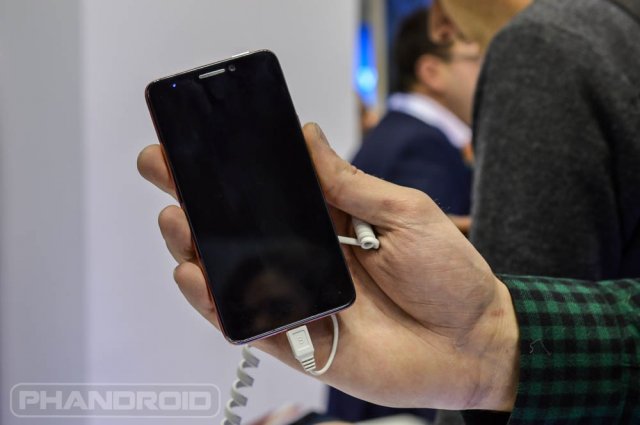
 In September of 2012, the
In September of 2012, the 
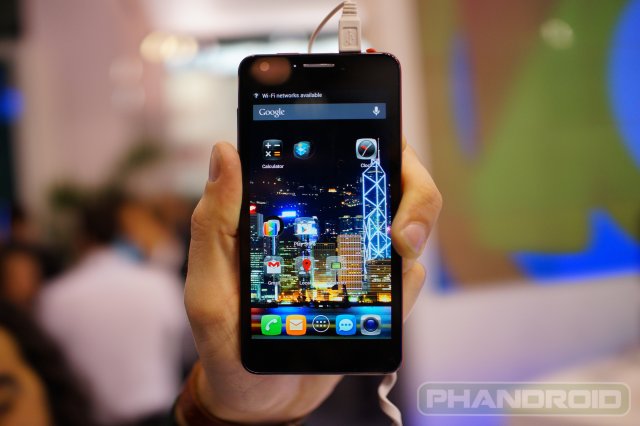
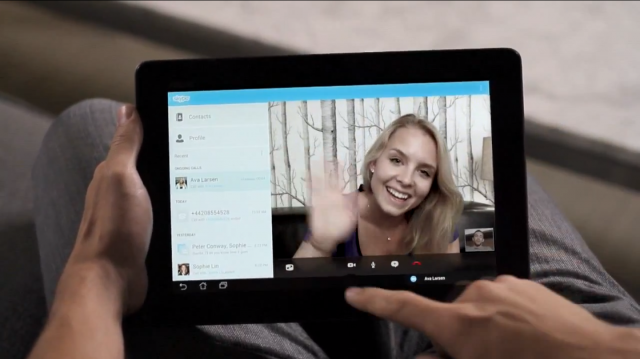
No comments:
Post a Comment